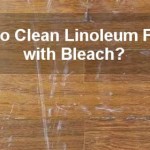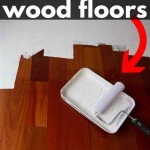How to Lime Wash a Wooden Floor
Limewashing a wooden floor offers a unique and charming aesthetic, transforming a space with a soft, ethereal finish. This technique, which involves applying a diluted lime-based solution to the floor, creates a matte, chalky look and subtly highlights the wood's natural grain. While it may appear daunting at first, limewashing can be achieved with a bit of preparation and attention to detail.
Preparing the Floor
Before applying the limewash, it's essential to thoroughly prepare the wooden floor. Begin by removing any existing coatings, such as varnish or paint, to ensure the limewash adheres properly. A scraper, sanding tool, or chemical stripper can be used for this purpose. Once the surface is bare, clean the floor with a mild detergent and water, ensuring all dirt, dust, and grime are removed. Allow the floor to dry completely before proceeding to the next step.
Sanding the floor with a fine-grit sandpaper will create a smoother surface, allowing the limewash to spread evenly. This step is especially important if the wood has knots, imperfections, or a rough texture. Remember to remove all sanding dust before applying the limewash to prevent it from becoming uneven or inconsistent.
Applying the Limewash
Limewash is available in both powdered and pre-mixed forms. If using powdered limewash, follow the manufacturer's instructions for mixing it with water to achieve the desired consistency. The mixture should resemble a thick cream. For a more transparent finish, use a less concentrated mixture, while a thicker mixture will result in a more opaque look.
Apply the limewash evenly to the floor using a brush or a roller. Work in sections, applying the limewash in thin, even coats. Allow each coat to dry completely before applying the next. Depending on the desired level of opacity, two to three coats may be necessary. It's important to apply the limewash in the direction of the wood grain for a more natural look.
After each coat has dried, consider lightly sanding the floor with a fine-grit sandpaper to create a smoother, more uniform surface. This step also helps to remove any brush strokes or uneven areas.
Sealing the Floor
Once the limewash has dried completely, it's advisable to seal the floor to protect the limewash and enhance its durability. A clear sealant, such as a water-based varnish, polyurethane, or wax, can be applied using a brush or a roller. Apply the sealant in thin, even coats, allowing each coat to dry completely before applying the next.
Choosing the right sealant depends on the desired level of protection and sheen. A matte sealant will preserve the natural look of the limewash, while a glossy sealant adds a touch of shine. The type of sealant also influences the floor's durability and ease of maintenance.
Maintenance
Limewashed floors require minimal maintenance, but it's essential to keep them clean and dust-free. Regular sweeping or vacuuming with a soft brush attachment is sufficient for general cleaning. For a more thorough clean, use a damp mop with a mild detergent, avoiding harsh chemicals. It's important to dry the floor thoroughly after cleaning to prevent moisture damage.
To freshen up the limewash and enhance its appearance, consider reapplying a thin coat of limewash every few years. This process helps to restore the original color and texture of the limewash, ensuring the floor retains its charm and character.
Key Considerations
Durability
Limewash, while beautiful, can be more susceptible to scuffs and scratches compared to other floor finishes. It's important to consider this factor when deciding if limewashing is the right choice for high-traffic areas or households with pets or children.
Color
The color of the limewash will vary depending on the type of lime used and the desired opacity. It's essential to conduct a test patch on an inconspicuous area of the floor to determine the final color before applying it to the entire surface.
Water Resistance
Limewash is not completely waterproof, making it unsuitable for areas prone to water damage, such as bathrooms or kitchens. If you're considering limewashing these areas, explore specialized limewash products designed for high-moisture environments.
Limewashing a wooden floor offers a unique and charming aesthetic, creating a soft, ethereal look. By following these guidelines and considering the key factors, you can successfully transform your wooden floor into a beautiful and timeless feature.

Lime Washing Solid Wood Floors The Ultimate Guide

How To Lime Wash Your Floors

How To White Wash Lime Wood Flooring Oak Timber

Floor Staining Timber Flooring Company

Lime Washed Oak Flooring Timber Floor Sanding

How To Whitewash And Seal A Wood Floor Diy Steps Milk Paint Lime Wash Antique Look

How To Whitewash And Seal A Wood Floor Diy Steps Milk Paint Lime Wash Antique Look

White Lime Wash Floors In Call On 02 8416 8139

Lime Washed Baltic Pine

Porters Wood Wash City Beach Timber Flooring
See Also







